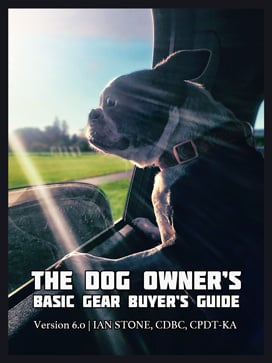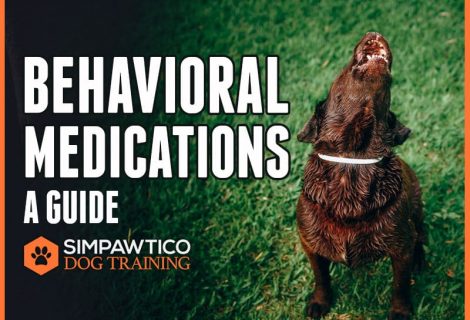13 Big Dog Training Concepts from The First Days of School
NOTE: in June of 2017 we updated this article and reposted it with video! Take a look here for the new, improved, and expanded version!
ANOTHER LIFE
In another life I was a high school English teacher. Believe me, I’ll take dogs over teenagers any day. In my professional development as an effective teacher we were introduced to the work of Harry Wong. He is a nationally known educator and speaker. His book The First Days of School is typically given out free to teachers at workshops (at one point, I owned three copies because of this). I saw him speak live once when I lived in Arizona.
Recently I happened upon one of my old copies of The First Days of School in the attic and flipped through it with a chuckle. I began reading it through a dog trainer’s eyes and was gobsmacked at how relevant the information was!
ROUTINES ARE THE BACKBONE OF TRAINING
I’ve often said to my human students in training classes that it’s useful in many instances to think of your dog as a kid in that they need the same things a kid does to thrive: boundaries, limitations, recognition, basic needs met to feel safe, and continuing support. When I read Harry Wong’s book from the angle that he was talking about dogs rather than adolescents, some good stuff came out of it. Here I’ve collected a few of the most pertinent points, edited and adapted for dog behavior:
- Three characteristics of an effective trainer: 1) has good management skills, 2) trains for mastery, 3) has positive expectations for the dog’s success.
- The number one factor that leads to dog achievement is management.
- Your expectations of your dog will greatly influence their achievement in training and in their lives. Do you have high expectations? You should!
- The number one problem with dog behavior is not discipline; it is the lack of procedures and routines.
- Most pet parents spend time giving and repeating commands and then disciplining when things go wrong. They never spend enough time managing their dog’s home life.
- Effective handlers MANAGE their dogs; ineffective handlers DISCIPLINE their dogs.
- Rehearse your procedures with your dog until they become routines.
- All effective homes have structure. A series of procedures and routines equal structure.
- Learning is much more effective when it takes place within a supportive community (even if that community is just your family).
- Puppy achievement is directly related to how the handler/owner establishes home procedures the very first week. The ineffective handler/owner spends much of their puppy’s first week attempting to teach a behavior or do fun things together and then spends the rest of his or her life running after the dog; the effective handler/owner spends much of the first week teaching the dog to follow procedures.
- (that last one goes for getting a new dog at any age, too)
- The greater the structure of a lesson and the more precise the directions on what to do, the lower the error rate and the higher the achievement rate.
- Learning has nothing to do with what the owner covers; learning has to do with what the dog accomplishes.
Many more concepts in the book speak to the art of training dogs via teaching in general. A lot of the little jewels I snatched were really to develop my teaching with humans and their dogs—I won’t go into detail here with those. Nonetheless, I think the few concepts I’ve outlined above say a lot about what’s at the heart of effective training, and you—whether you’re just a dog owner or a trainer—can gain much wisdom from these ideas.
KEY TAKEAWAY
The biggest thing to take away from this, I believe, is to think about those routines and procedures in your home. Don’t just improvise every day. Think and plan on these items:
- How, exactly, is food served?
- What’s the routine for going potty?
- Are there reliable times for food and potty?
- How do we act when guests come over?
- What do we do when leaving the house (with or without the dog)?
- How do we get ready for a walk?
- What do we do when we get home?
- How do we meet people and dogs?
- What’s the expectation for different areas of the house?
If you haven’t asked yourself these questions and others like them, made a plan about how you want it to look, and then trained and practiced that plan, you have planned to fail. I’m betting if you have complaints about your dog, it’s probably one of these issues.
IT’S NEVER TOO LATE
Unlike teaching, however, you can start NOW. If a teacher blows it the first couple of weeks of school and doesn’t set the right tone, he or she will probably never get the class back. It’s nearly impossible to change things. Dogs, however, are much more elastic in that respect, and you can reteach and reset if you’re patient and consistent enough. I’m not saying it’ll be easy, but nothing worth having is. Keep learning, and keep practicing. Good luck!











“In another life I was a high school English teacher. Believe me, I’ll take dogs over teenagers any day.” I’m convinced you never gave yourself enough time. I would have said the same thing had I worked the same number of years in teaching. But now that I’m nearly in my tenth year, I really enjoy the students, and I crack them up. What often sucks the most about teaching is the pay, the parents, some of the faculty, and most of the admin.
“I really enjoy the students, and I crack them up. What often sucks the most about teaching is the pay, the parents, some of the faculty, and most of the admin.” And these two sentences pretty much describe my training classes. Although, you’re right. It wasn’t really the students I didn’t like about it; it was exactly those things you mentioned. I still love the dogs, though. Given the choice, I’d take dog training any day.